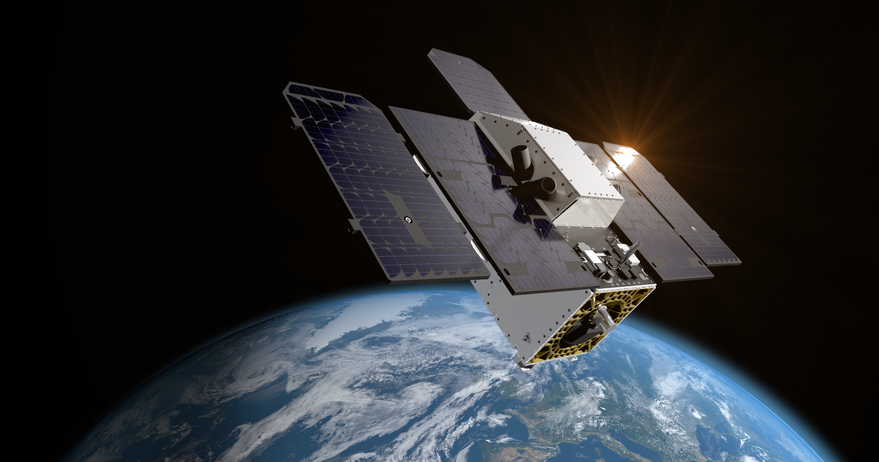PARIS – Planet released additional information about the hyperspectral constellation the Earth-observation company is developing through the Carbon Mapper public-private partnership.
San Francisco-based Planet remains on schedule to launch the first two hyperspectral satellites in 2023 to gather data in 400 spectral bands with a resolution of 30 meters per pixel.
While data to pinpoint methane and carbon dioxide sources will be shared publicly through the Carbon Mapper Coalition, Planet also will combine hyperspectral data with electro-optical imagery obtained by its Dove, Pelican and SkySat satellite fleets to provide data and insights for government and commercial customers.
“By helping to identify the spectral ‘signatures’ of chemicals, materials and processes across the globe, hyperspectral data can reveal otherwise hidden trends and could fill intelligence gaps and mitigate risks,” according to a Sept. 19 news release.
Planet’s hyperspectral satellites destined for sun-synchronous orbit are called Tanager, named for a family of colorful Central and South American birds.
In 2021, a consortium led by the State of California, NASA Jet Propulsion Laboratory and Planet announced plans for the Carbon Mapper constellation of satellites equipped with hyperspectral sensors to detect, quantify and track sources of methane and carbon dioxide. Additional Carbon Mapper Coalition partners include the University of Arizona, Arizona State University, the High Tide Foundation and the non-profit RMI.
“Beyond offering methane and CO2 signatures, Planet’s commercial hyperspectral offering looks to provide customers with data for dozens of other environmental applications and indicators that are needed to closely monitor the health of the planet,” according to the news release. “The satellites’ hyperspectral sensor technology, pioneered by NASA Jet Propulsion Laboratory will provide 30-meter resolution and a full spectral range of shortwave infrared and high-precision 5-nanometer wide bands; this hyperspectral offering is designed to help organizations understand changes on land and at sea, from coastal zones to forests to urban areas and more.”
Planet obtains daily imagery of Earth’s landmass with a constellation of more than 200 satellites.
Tanager satellites are being manufactured in San Francisco, alongside Doves and Pelicans.
Planet is upgrading its constellation of Dove cubesats with SuperDoves, which gather imagery in eight spectral bands at a resolution of about 3 meters per pixel, compared with four spectral bands for their predecessors.
The company continues to obtain high-resolution imagery from SkySats, manufactured by Maxar Technologies.
